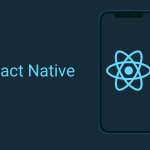As we move further into 2025, APIs have become more critical than ever. They are no longer just technical components but strategic assets that drive innovation, scalability, and automation across industries.
In today’s interconnected digital world, technology thrives on communication. Every app, website, and digital service you use interacts with other systems in some way. This seamless exchange of data and functionality is powered by something known as an API, or Application Programming Interface. APIs are the invisible bridges that allow software applications to communicate and work together efficiently. They are the foundation of modern technology, enabling everything from social media integration to mobile payments.
Table of Contents
Understanding What an API Really Is
At its core, an API is a set of rules and protocols that allows one software program to interact with another. It defines how requests and responses are structured so that different systems can exchange data smoothly. Think of it as a messenger that takes a request from one application, delivers it to another, and brings back the response.
For example, when you log in to a website using your Google account, you are using Google’s API. The website sends a request to Google to verify your identity, and Google responds with your authentication details. This interaction happens securely and almost instantly because of APIs.
The Evolution of APIs in Modern Technology
APIs have existed for decades, but their importance has skyrocketed in recent years with the growth of cloud computing, mobile apps, and web-based services. In the early days, APIs were primarily internal tools used to connect different software components within an organization. Today, they are public-facing systems that power global ecosystems.
Companies like Google, Amazon, and Facebook offer public APIs that allow developers to build new products using their data and services. For instance, the Google Maps API enables countless apps to integrate location-based features. Similarly, the Stripe API makes online payments simple and secure for thousands of e-commerce businesses.
Why APIs Are the Backbone of Modern Applications
Almost every modern digital experience relies on APIs. When you order food online, book a ride, or stream a movie, APIs are working behind the scenes to make the process smooth. They connect your device to servers, databases, and other applications, ensuring the right data is delivered at the right time.
Developers rely on APIs to avoid building everything from scratch. Instead of creating their own payment systems, maps, or notification services, they integrate existing APIs. This approach saves time, reduces costs, and enhances reliability. APIs also make it easier to update and scale applications, since changes in one system can automatically propagate through connected services.
Types of APIs and How They Work
There are several types of APIs, each serving a different purpose:
1. Open APIs: Also known as public APIs, these are available to developers outside of the organization. They encourage innovation and allow third parties to build on existing platforms.
2. Internal APIs: These are used within an organization to connect internal systems and improve efficiency.
3. Partner APIs: These are shared with specific business partners and used to integrate systems securely.
4. Composite APIs: These combine multiple API calls into a single request, improving performance and reducing latency.
Each type of API serves as a critical building block for a wide range of applications, from enterprise software to social media platforms.
The Role of APIs in Cloud and AI Technologies
APIs play a central role in enabling cloud computing and artificial intelligence. Cloud service providers like Amazon Web Services, Google Cloud, and Microsoft Azure offer APIs that allow developers to manage storage, deploy servers, and process data remotely. These APIs make cloud infrastructure accessible and easy to automate.
In the field of AI, APIs allow developers to access powerful machine learning models without needing to build them from scratch. For example, OpenAI’s API enables developers to integrate natural language processing into chatbots and virtual assistants. Similarly, image recognition APIs help identify objects in photos and videos, powering applications in healthcare, security, and retail.
The Business Value of APIs
Beyond technical benefits, APIs are now seen as key business enablers. Many companies generate significant revenue by offering API access to their services. For instance, Twilio’s communication APIs allow developers to add messaging and voice features to applications, forming the company’s entire business model.
APIs also support partnerships between organizations, fostering innovation through collaboration. Startups and enterprises alike use APIs to expand their offerings, reach new audiences, and integrate seamlessly into the global digital economy.
The Future of APIs
Looking ahead, APIs will continue to evolve alongside emerging technologies. We are entering the era of API-first development, where new software products are built with APIs at their core. As businesses adopt microservices architectures, APIs will become even more important in maintaining scalability and modularity.
The future will also bring more intelligent APIs that use machine learning to optimize performance, detect anomalies, and improve security in real time. As quantum computing, Internet of Things (IoT), and blockchain technologies advance, APIs will be the essential link connecting all these systems. Also Check Best Programming Frameworks for App Development 2025







1 thought on “Exploring the World of APIs – Backbone of Modern Tech 2025”